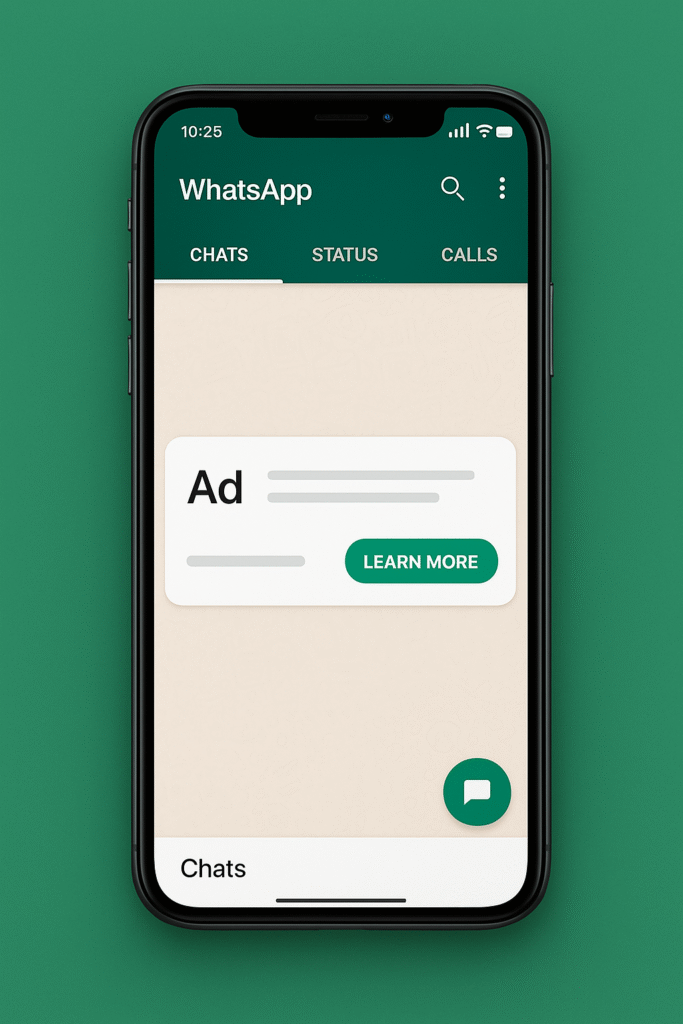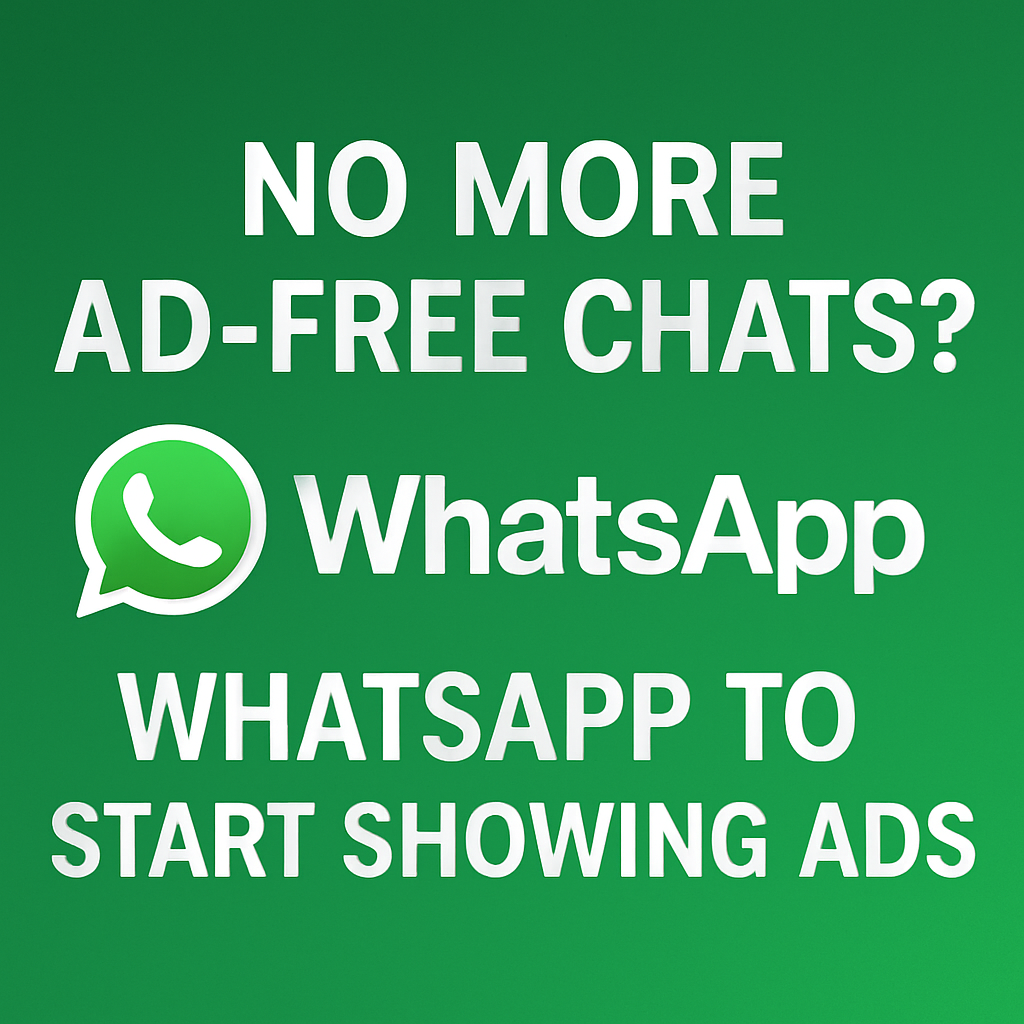
📱 Introduction: WhatsApp’s Big Shift
WhatsApp, the world’s most popular messaging app with over 2 billion users, has long been known for one key promise: no ads. That’s about to change.
In 2025, Meta (formerly Facebook), the parent company of WhatsApp, announced plans to introduce advertisements into the app’s interface. The change will be gradual, but it marks a major turning point for the platform—and for user experience, privacy, and digital advertising as a whole.
Let’s explore what these changes look like, why they’re happening, and how they might affect you.
💰 Why Is Meta Introducing Ads on WhatsApp?
While WhatsApp has avoided monetization through ads in the past, Meta is under growing pressure to generate revenue across its platforms. With Facebook’s and Instagram’s advertising space becoming saturated, WhatsApp remains one of the few untapped platforms in Meta’s portfolio.
Reasons behind the shift:
- Monetize WhatsApp’s massive global user base
- Diversify revenue as Meta invests in the metaverse and AI
- Leverage WhatsApp for business-to-consumer engagement
- Compete with platforms like WeChat, which integrate commerce and ads
🧭 Where Will the Ads Appear?
WhatsApp is taking a measured approach to ads—at least for now. Here’s where you’ll likely start seeing them:
1. Status Updates (WhatsApp Stories)
Similar to Instagram Stories or Facebook Stories, WhatsApp Status is a natural fit for vertical ad placement. These full-screen ads may appear between friend updates.
2. Channels and Broadcast Lists
New features like WhatsApp Channels, where users follow celebrities, brands, or content creators, will include promoted content or sponsored messages.
3. Business Chats (Future Update)
While not confirmed, Meta has hinted that business accounts may feature promotional content inside customer service threads.
🔒 Regular personal chats will remain ad-free—for now.
🔐 What About Privacy?
WhatsApp has built its reputation on end-to-end encryption, and Meta has promised that private messages will not be scanned to deliver targeted ads.
However, data outside the chat bubble—such as:
- Status views
- Channel subscriptions
- In-app behavior
- Contact lists (when consented)
…may be used to generate relevant ad content.
This has sparked concern among privacy advocates who argue that user metadata is still sensitive and can be used to create behavioral profiles.
🧠 How Will Ads Be Targeted?
Meta plans to use the same ad delivery systems found on Facebook and Instagram, combining:
- Device info
- Usage behavior
- Profile data from Meta accounts
- Business interactions
If you’re logged in to Facebook or Instagram on the same device, Meta can likely correlate your activity across platforms, offering highly personalized ad delivery.
🌎 Global Reaction: Mixed Feelings
The announcement has sparked a global debate. Here’s what users are saying:
🟢 Supporters say:
- It’s inevitable—most free apps include ads.
- WhatsApp has remained free for over a decade.
- If done respectfully, ads could support better features.
🔴 Critics argue:
- It violates the original promise made by WhatsApp’s founders.
- It opens the door to future ad creep inside chats.
- User trust may erode, leading some to consider switching to apps like Signal or Telegram.
📈 What Does This Mean for Businesses?
For marketers, the change offers exciting opportunities:
- Reach users in their most active daily app
- Deliver personalized promotions via Status
- Grow followers through WhatsApp Channels
- Engage customers directly through WhatsApp Business
Expect Meta to roll out ad manager integration tools that allow brands to easily create and manage WhatsApp campaigns from the same dashboard used for Facebook/Instagram ads.
📲 Will You Be Able to Disable the Ads?
At this point, WhatsApp will not offer a paid, ad-free version. Unlike YouTube Premium or Spotify, WhatsApp has no subscription tier to bypass ads.
This could change in the future—especially if backlash grows.
🧪 Is This the Beginning of a Bigger Change?
Some analysts predict this move is just the first phase of full monetization. If users accept ads in Status and Channels, Meta could expand into:
- AI-powered ad bots
- Sponsored message prompts
- Product links in chats
- Commerce tools similar to WeChat
Meta has a track record of introducing features gradually—often starting with the least intrusive option before scaling up.
🔄 A Quick Look Back: WhatsApp’s Founders Disagreed
When Facebook acquired WhatsApp in 2014 for $19 billion, the app’s co-founders—Brian Acton and Jan Koum—insisted that user privacy and ad-free experience were non-negotiable.
In fact, WhatsApp’s original manifesto stated:
“No ads. No games. No gimmicks.”
Acton eventually left Facebook and famously told users to “#DeleteFacebook” during the Cambridge Analytica scandal.
Now, years later, WhatsApp’s strategy is firmly in Meta’s hands.
💬 What Can You Do as a User?
If you’re concerned about ads or data usage:
- Review your ad preferences on your Meta account settings.
- Use WhatsApp without linking Facebook/Instagram accounts.
- Limit interaction with commercial Status or Channels.
- Explore alternative messaging apps like Signal or Telegram.
🧭 Conclusion: A New Chapter for WhatsApp
Whether you welcome the ads or dread them, WhatsApp’s era of ad-free chatting is coming to an end.
Meta is betting that the world’s dependency on messaging will outweigh concerns about privacy or user experience. But the future of WhatsApp will depend heavily on how respectfully these ads are implemented—and how willing users are to accept the trade-off.
Until then, enjoy your ad-free chats while they last.








